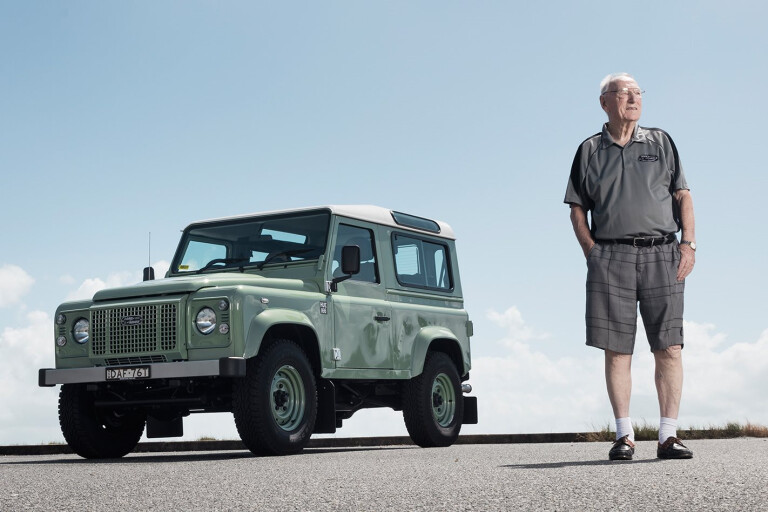
4x4 Australia is saddened to hear of the passing of Arthur Goddard in August 2022 at the age of 101.
Our thoughts go out to his family and friends. He will be fondly remembered by all classic Land Rover enthusiasts.
4X4 Australia editor, Matt Raudonikis
May, 2016: 4X4 Australia talks with the legend, Arthur Goddard
Editor's note: in honour of our lively chat with Mr Goddard, the story below is presented in its original, unaltered form.
The godfather of the Land Rover is a crafty old bugger with a quick wit and a ready laugh. He’s a doer and a stirrer.
The mind is sharp and that infectious laugh punctuates yarns. He has much to chuckle about after years of automotive engineering and management tasks – none more poignant than being the development engineer for the original Land Rover.
Arthur Goddard, now 95, was the fixer, the minder and the leader of the English team that designed and built the first Land Rover – achieved in just ten months.
The project began with an idea from Rover’s technical director Maurice Wilks. The first chapter closed in 1948 with Arthur driving the square-jawed Land Rover to debut at the Amsterdam Motor Show, where he was snowed under with orders.
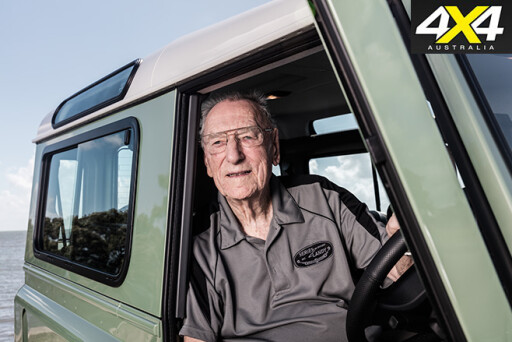
“I thought to myself, we’ve got an oil well here!” Arthur recalls.
It was an oil well that was capped when production of the Series 1’s successor, the Defender, ceased in January, 2016.
In between those two dates, more than two million of the iconic Series Land Rovers were sold around the world.
Arthur has a simple explanation for this four-wheel drive’s long life.
“We gave people what they wanted. It’s pleased a lot of people and it’s kept on pleasing people,” Arthur says. “We met a need. I must say some of the needs we met we didn’t know were there. On the other hand, some of the stuff we thought would be an absolute winner was an absolute woof.” He breaks into a hardy chuckle.
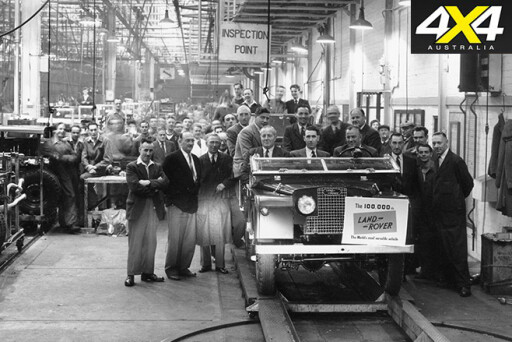
These days Arthur is an Australian living in Brisbane, but there remain hints of growing up in the north of England and working in Land Rover’s Solihull plant, outside Birmingham.
Here in 1947, Maurice Wilks, backed by his brother and Rover managing director, Spencer, decided Rover should build a go-anywhere, do-anything vehicle. The idea was partly inspired by the World War II Jeep on Maurice’s hobby farm.
Arthur, then chief development engineer on Rovers, recalls Maurice was also keen on an army vehicle after talking to pals in the Defence Ministry.
“They were looking for a Jeep-type vehicle, so it had to meet all the army requirements and it had to be a useful vehicle on the farm, where you could go off down the road to do a bit of shopping or you could take a bale of hay across a snow-bound field or whatever. And a much more useful combination than your tractor,” Arthur says.
Maurice wanted power take-offs (PTO), and a drive up the centre because he saw possibilities for industrial applications, arc welders and more.
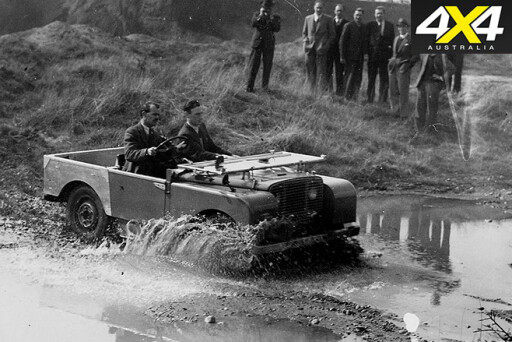
“I said ‘how many vehicles is this?’” Arthur laughs.
He knew something about army vehicles. “But who the hell knew about tractors, who was working in the automobile industry in the UK?” Here he was grateful for help from the Ministry of Agriculture.
Arthur is sure that the first Land Rover wouldn’t have come together, certainly not in just 10 months, if not for teamwork and prompt decision-making.
He says the hardest part wasn’t the engineering, but building enthusiasm across the factory floor. Arthur even took to organising an open day – complete with strawberries and cream – for wives, families and girlfriends.
“Leadership was absolutely vital in this, a lot of things were being done at once; things normally done in sequence… having engines and gearboxes and body shapes and seats all done at once.”
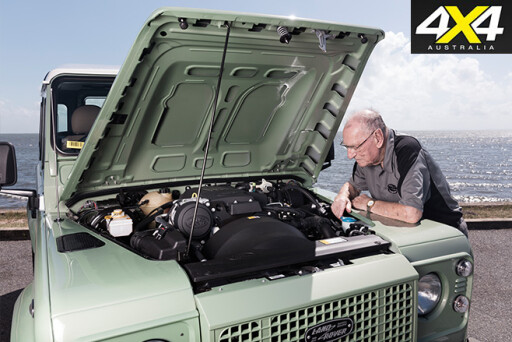
Decisions were made smartly, most through informal meetings between Arthur, Maurice and Spencer twice a week.
“He’s (Maurice) no fool; knows perfectly well that I know the answer already… I wouldn’t be asking him if it mattered what he said,” Arthur chuckles.
For instance, that original, pale-green body colour was dictated by the canny Rover engineer. Understanding the potential for army orders, Arthur decided on a military shade. “What colour do you want?” he’d asked Maurice. “If you want more than one, put the date (for completion) back two months. Not putting pressure on you.”
While Maurice was the concept man – the one who decided the clock should go in the middle of the dashboard, as on his mother’s mantelpiece – his engineer understood how to pull it all together.
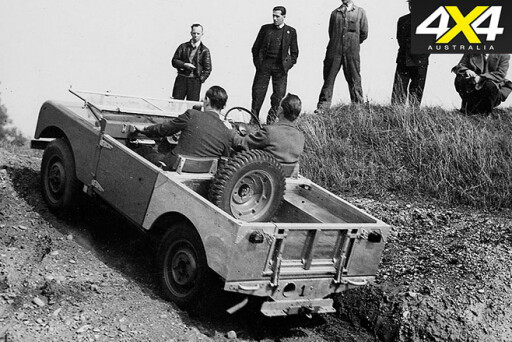
“Maurice knew, or appeared to me to know, what people would buy, I hadn’t got that. But I knew how to get it made.”
That included using the services of Jack Swaine, the engine man for Rover cars, and Frank Shaw, the gearbox man who designed the transfer case for drive to the front wheels and power to a PTO plus V-belt drive for implements.
“I could pick people to do the jobs,” a modest Arthur says. “I didn’t have to be all that good myself, because I had a suspension man, a steering man and so on.”
But this Land Rover chassis was all-new. “The chassis made it possible. You haven’t got a complete body, but you want a frame on which to mount everything. That was the engineering problem… what does that frame look like? Looks like nothing you’ve ever seen before.”
Credit for the chassis and bodywork went to Gordon Bashford and Olaf Poppe for the rare box-section chassis with upright pieces below the A-pillars.

Arthur says as much was learnt about what not to do, as what to do from the World War II Jeep.
“One was, if you wanted a rust bucket, you copied the Jeep. The fact that these (Land Rovers) were all aluminium and galvanised pretty much took us outside everything of the Jeep.”
Arthur and his team double-checked each component – from door locks to differentials – to counter risks when the Land Rover jigsaw was first assembled.
“We were trying to make sure everything got to the finish post at the same time – because Maurice finished up saying he wanted the job done in 12 months. For a normal vehicle it’s three years, never mind this fancy one that does all these different things. So I think it was a bloody miracle that he got it.”
Little details caught the Rover lads out when testing began in the paddocks and up and over old Nissen huts.
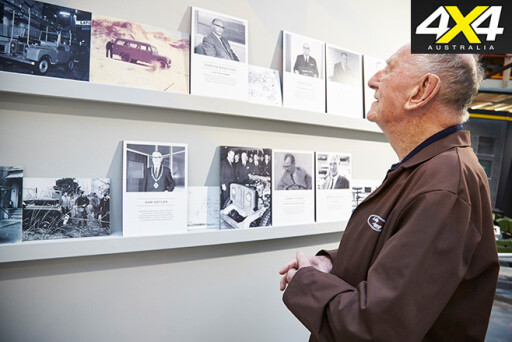
“You get stupid things, like that bloody clock. If you run over a certain thing, the clock jumps out, lands on the floor and gets smashed. There’s a little clip at the back which either clips into the groove or doesn’t. If it doesn’t, that’s the sort of thing that catches you.”
He’s proud of the Rover teamwork, but says his biggest mistake was not adding eight inches (20.3cm) to the original wheelbase of 80 inches and 86 inches (2.18m), something he did later to cater for army needs for a six-seater with two troopers either side at the rear.
That job done, Arthur left Rover in 1955, took up posts with other automotive concerns, including one in Australia in 1972. He liked the place and bought a small Brisbane engineering firm as a hobby, then semi-retired 16 years back. Now, with the aid of engineering son, Chris, the business, called Vehicle Components, is a designer of trailer suspensions and couplings.
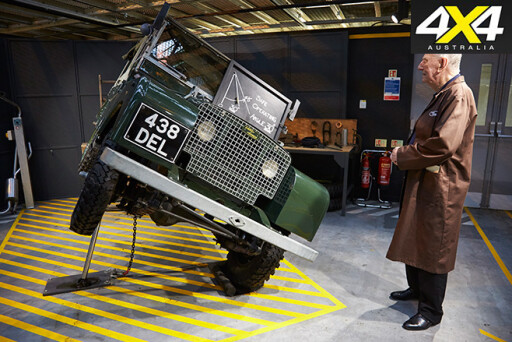
Arthur is just about to move into a retirement village. He’s hung up his driver’s licence for his beloved Jaguars and packed away the golf clubs.
He’s sure there’ll be another Defender. He pats the dashboard of the Heritage 90 and looks for the door catch. It’s not where he put it at the rear of the door under the lock. It’s up front.
“Why did they put this over here? I hope they had a bloody good reason… they’d have needed one.”
Arthur breaks into a laugh, stirring the pot as he goes.

COMMENTS